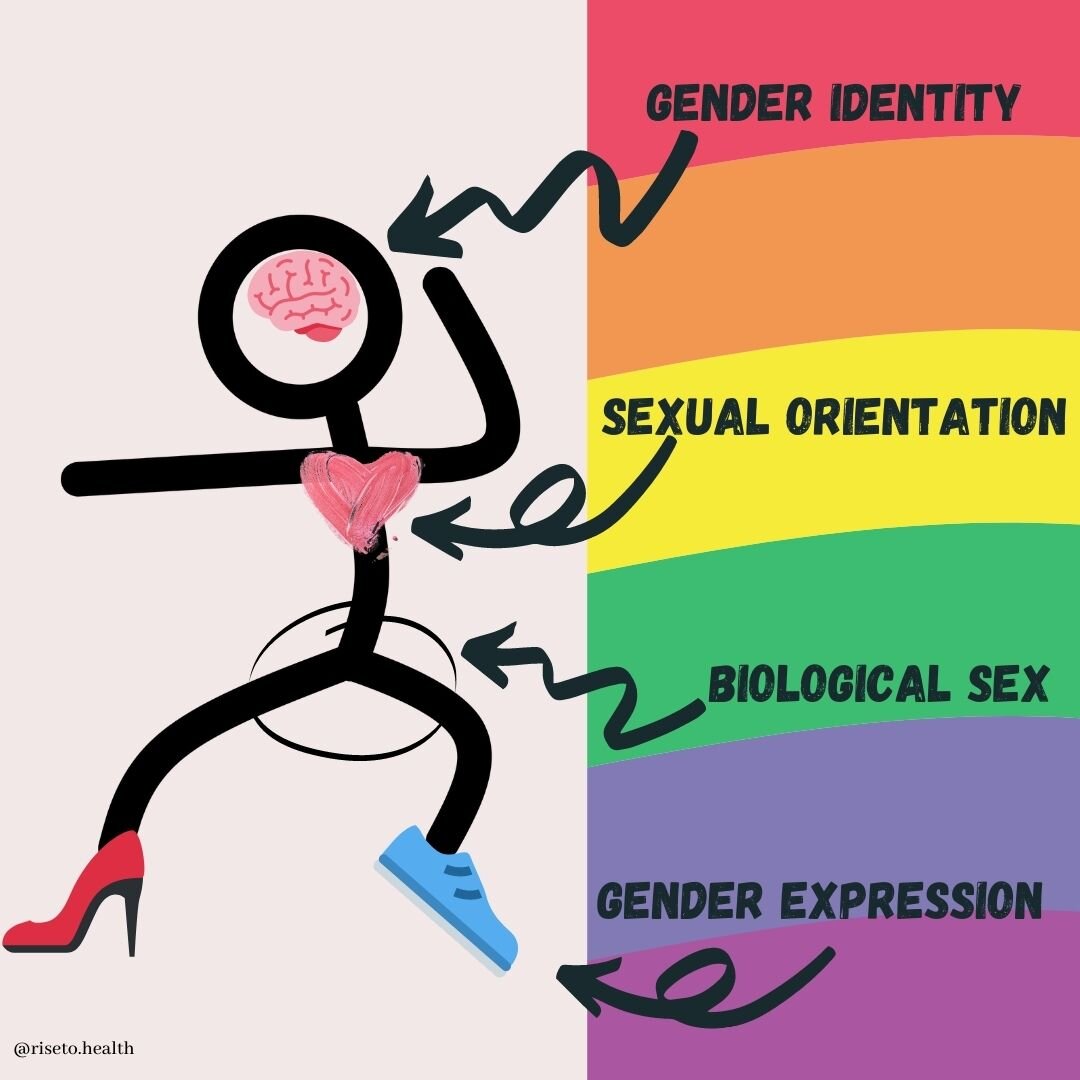LOVE is LOVE - LGBT+ history month
To celebrate LGBT+ History Month I thought it be fun to explore the fundamental basics in this blog post, to better understand this beautiful community.
So… where to begin?
You know, when I started reading into the LGBT+ history and all the beautiful colours + terms of the communities spectrum… I realised how little I knew and what category to even put myself in.
If you yourself are still unsure on where you stand - fear not, you don’t have to put a label on yourself. Of course, unless you feel it helps you better identify who you are and how you feel, then ace!
In this blog we’re going to break it all down into a brief LGBT+ 101 and hopefully by the end of this read you’ll have a better understanding of all the beautiful people on this planet and the identities they may choose to express themselves by.
First of all, let’s breakdown the acronym.
L G B T Q Q I A A
Lesbian
Gay
Bisexual
Transgender
Queer
Questioning
Intersex
Asexual
Ally
A lot to take in right? These all umbrella under 1 of the 4 key traits every person, queer or not has. Let’s get into them…
1. Gender Identity – this is what you feel
(Intersex + Transgender can be related here)
2. Sexual Orientation – this is who you love
(Lesbian, Gay, Bisexual, Asexual)
3. Biological sex – this is what you have
(Intersex refers to differences in biological sex, which could be related to transgender)
4. Gender Expression – this is how you look and act
For the remaining 3 letters in the LGBTQQIA acronym - queer is an umbrella term used by most of the community to refer to anyone who identifies as being part of the LGBT+ community.
Questioning refers to the people who are still questioning their sexuality or gender.
And allies are people who don’t identify as being queer but support the community.
The LGBT+ community understands that the 4 traits listed above can fall anywhere on a scale between two points (aka a spectrum). So, let’s delve in a little deeper into the different spectrums…
GENDER IDENTITY
Sex: Biological - what you have
(Male/Female, Testosterone/Oestrogen, Penis/Vagina, Body + Facial hair/Breasts + wider hips, Lower voice/Higher voice)
Intersex is the term used to describe people whose hormones, internal organs + genitals do not fit typical binary notions of female or male bodies.
Gender: Psychological – what you feel
(The scale between boy and girl. He, Him, His / She, Her, Hers)
Genderqueer is the term used to describe people who fall outside the gender binary. Halfway between the extremes is gender neutral (someone who identifies as neither a man nor woman).
There is also gender fluid and bigender. Those persons identities can fluctuate on where they are on the scale.
*Please be mindful of respectfully using the correct pronouns. Agender people don’t identify with any gender and often use gender neutral pronouns (they, them, their).
So, when your internal gender identity (what you feel) matches your biological sex (what you have) that’s called cisgender. If they don’t match – transgender.
GENDER EXPRESSION
This is usually an extension of gender identity and it is how people choose to show their gender to the outside world. This is displayed in the choice of clothes you wear, how you style your hair, your behaviour, mannerisms, tone in voice and sometimes even the way you in which you choose to hold yourself.
SEXUAL ORIENTATION
This refers to whom you are attracted too.
Let’s look further into the scale…
Heterosexual is the attraction to someone of the opposite gender.
Homosexual (on the opposite end) is the attraction to someone of the same gender.
In between is bisexual – attraction to both genders.
Someone who is asexual is not attracted to any gender.
A person who identifies as being pansexual means that they are attracted to all genders, even those who lay outside of the binary.
This isn’t even scratching the surface; attraction can be broken down even more into romantic and sexual. And then there also several other identities which I haven’t listed. Please note this isn’t for any specific reason. I just know that as a reader this may all be a little confusing and a hard to understand, especially if you’ve never been exposed to them before.
If you’re feeling left a little overwhelmed, know that you’re not alone. Some of these terms are completely brand new to me. Please know that if you meet someone who identifies as something that’s new to you, it is totally okay to ask them respectfully - “What does that identity mean to you?”
Woah, a lot to take in right?
Take your time to digest everything.
Maybe if you’re questioning your own identity, have a little re-read through and perhaps even journal if you find it helps.
Here are some journal prompts and a pretty good place to start…
“What is my biological identity? Does this relate to how I feel?”
“How do I like to express myself to the external world?”
“Am I attracted to anyone? If so, who?”
I really hope you enjoyed today’s post and thanks again for reading beautiful being!
Looking forward to sharing more with you on our blog soon.
Sending lots of love as always,
Amy.
